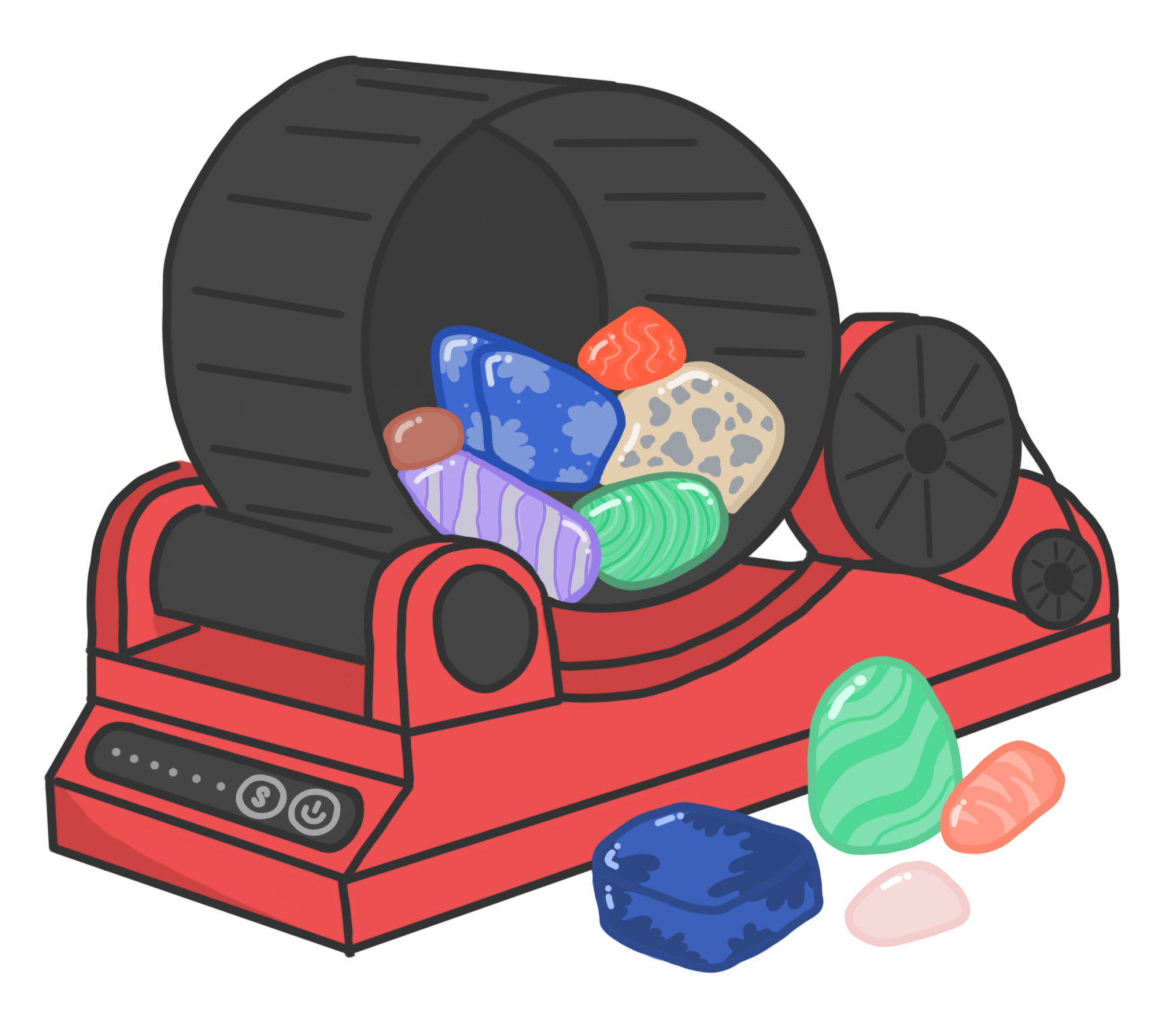
Do you like rocks? If so, you might want to consider picking up the hobby of rock tumbling, the process of finding and polishing rocks to bring out their color and shine. All you need are some rocks, water, grit, a tumbler and plenty of patience.
Marty Ree Zylstra ’24 began rock tumbling during quarantine and brought the hobby to Lewis & Clark.
“I really like it because it’s not hard to do, it’s really easy and it’s really rewarding,” Zylstra said. “You are finding these things, you are tumbling them and you are keeping the output.”
Zylstra originally picked up the activity because she was interested in its hippie subculture and enjoyed looking at aesthetically pleasing rocks, but has continued because she finds it exciting and rewarding.
“Now I really like the thrill of finding something super good that you found in nature yourself,” Zylstra said.
The process of rock tumbling begins with selecting your rocks. Zylstra usually searches the creek that runs across LC’s campus for rocks, but also finds them at the Willamette River or buys them from crystal stores.
“A good way to get started is just find a place with running water, let it rain really well to wash up new rocks, and then let it be dry for a couple days,” she said. “That’s my favorite place to look.”
Although you can put any kind of rock in the tumbler, Zylstra recommends looking for ones that are brilliant and colorful.
“You’re looking for brilliance and you’re looking for rich color,” she said. “Brilliance means shine or multi-dimensional color.”
Once you have chosen your rocks, you can begin the tumbling process. First, you will need to buy a rock tumbler, which is a piece of machinery that tumbles the rocks by constantly spinning. The barrel is usually made of rubber to reduce the noise.
“The most expensive thing is going to be the tumbler, they can run a hundred bucks,” Zylstra said. “Mine was only 60, I have the National Geographic one. You don’t need the technology to be advanced, you just need it to spin (the rocks).”
Zylstra recommends the National Geographic rock tumbler because it has a lower price point, can be ordered via Amazon and comes with grit, a starter set of rocks and materials to make keychains and jewelry.
The tumbling process begins by filling the tumbler with rocks, grit and then water. There are four types of grit that shape, sand, pre-polish and polish the rocks. Each grit cycle spins for one week.
“Your beginning set is enough to participate in the hobby for an entire month because on each grit you have to run your machine for a week and there are four grits,” she said. “So you’ve got a whole month of tumbling activities. And in that time while your batch is tumbling, I hunt for new rocks to put in my next batch.”
Zylstra has amassed an impressive collection of rocks and geodes, and likes to make jewelry with the smaller rocks. Although Zylstra keeps all the pieces she makes, she believes selling rock crafts could be a profitable side hustle for any aspiring rock tumbler.
“If you want to make crafts and sell them, you can make a lot of money even as just a hobby,” Zylstra said.
Subscribe to the Mossy Log Newsletter
Stay up to date with the goings-on at Lewis & Clark! Get the top stories or your favorite section delivered to your inbox whenever we release a new issue.

Leave a Reply